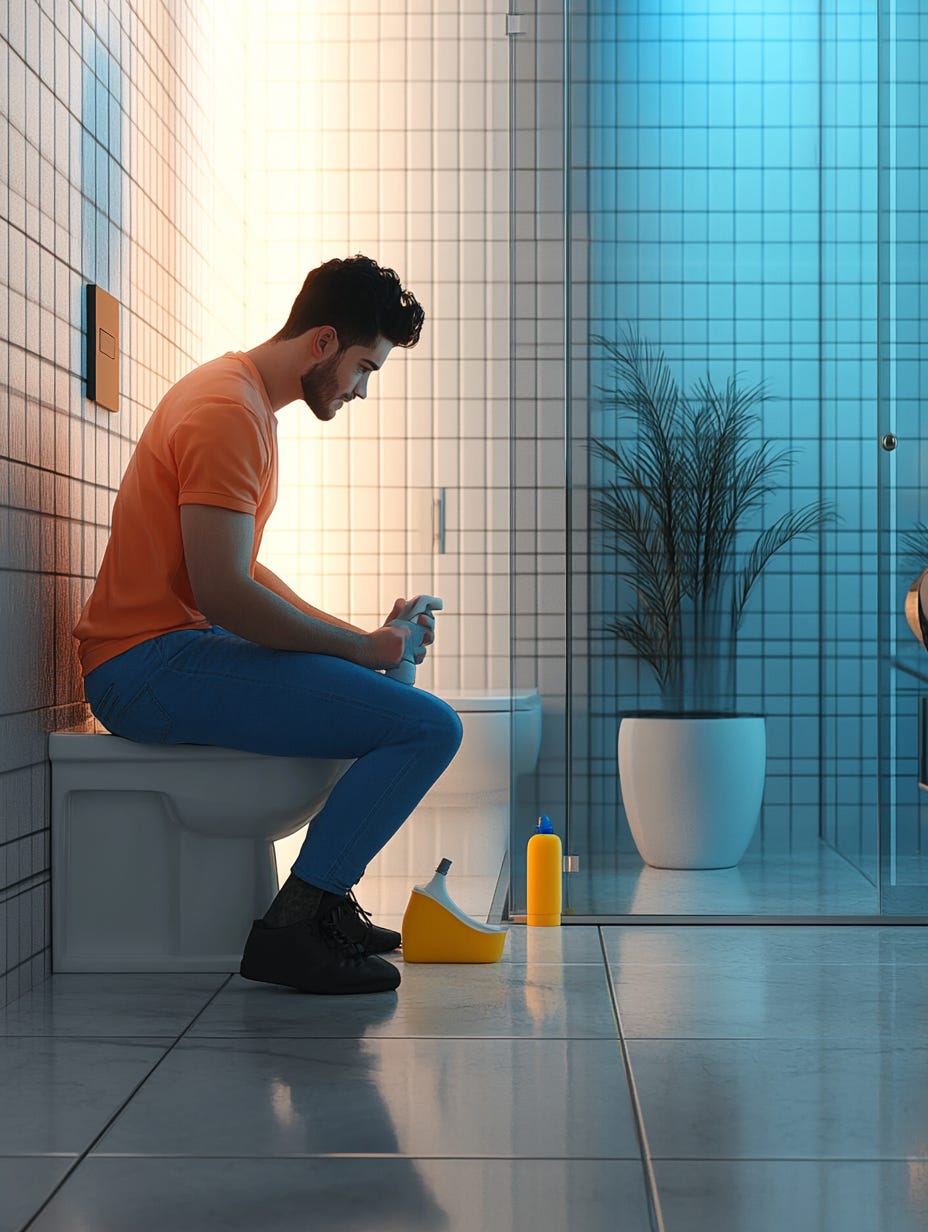All I wanted was an AI image of a man cleaning a toilet
One man seemed to be planning to brush his hair with the toilet brush.
By Dr Samantha Pillay, surgeon and author
When I set out to create an AI image of a man cleaning a toilet, I didn’t expect it to be a challenge.
I’m a surgeon and writer, and do a lot of work around gender equality. I wanted an image for a social media post to highlight the inequality in unpaid domestic work, in honour of Women’s Equality Day.
So I turned to Midjourney, the AI image generator. I’ve created countless images using AI before, and usually get what I want after a few attempts of entering prompts. It takes about 30 seconds to generate four images.
Yet, when I tried to create an image of man hard at work scrubbing a toilet, something seemed off.
Some of the men I created didn’t seem to know what they were doing. Their postures were awkward, their expressions bemused. Many held the brush in strange positions, and the brush itself often didn’t look like a toilet brush at all.
One seemed to be planning to brush his hair with it. One sat sadly near the toilet, looking hopelessly at the floor. One was wearing a suit. Some weren’t even positioned in front of the toilet in a way that would make sense for cleaning it.
I cycled through nearly 150 images, adjusting prompts and settings, before finally landing on one that looked ‘okay’ — although it still wasn’t quite what I was looking for. The guys didn’t have the right brush, and I just couldn’t get them to put the brush in the toilet.
It seemed like the AI simply couldn’t grasp what I was asking.
So, I tried a little experiment. I flipped the prompt and asked for a woman cleaning a toilet. The results were astonishingly easier to generate. I only had to create a few before there was one I could have happily used. The AI-generated women looked natural, focused and competent: effortlessly fitting into the scene.
For me, the experience was a subtle but powerful example of the gender biases baked into AI models.
The problem with AI Training Data
Generative AI models, like the one I used, create images based on content that already exists online. They are trained on massive datasets collected from all over the internet, including images and descriptions.
As of early 2024, Midjourney reportedly has around 20 million entries in its dataset, with continuous updates adding millions of new entries each month.
Related articles
If the training data — i.e. what’s out there online — disproportionately shows women performing domestic tasks, the AI learns to associate these activities more closely with women. It’s not that the AI is deliberately biased — it’s simply reflecting the world as it “sees” it through its training data. This is how stereotypes get embedded and, ultimately, reinforced.
The good news is that anyone who makes content has the potential to retrain AI, either directly or indirectly, and move the needle on gender representation.
One image at a time
There are two ways content we make can impact AI models. First, if our images or videos are used in future training datasets, they could directly influence the AI’s learning. And second, the content we share online can indirectly shape public perceptions and influence what others create.
By putting out content that challenges gender norms, I’m introducing new, diverse examples into the digital world. With more content creators actively working to break these stereotypes, we can start nudging AI’s understanding in a more equitable direction.
Despite its flaws, AI has been a powerful tool in my creative projects. I recently made a short film titled ‘An Incontinence Truth’, using AI-generated images, voices, and music to raise awareness about urinary incontinence, without using any real patients’ words or images. Without AI, this film would not have been possible.
It’s crucial that we generate content that presents a broader, more inclusive view of the world. By being thoughtful in our decisions, we can help reshape the digital landscape, one image at a time.
Dr Samantha Pillay is a urological surgeon specialising in the treatment of urinary incontinence. She is also author of the Inspirational Careers for Kids picture book series, which aims to challenge gender stereotypes in male-dominated careers.
















I think the article will make a stronger point if it includes the image of how ai depicts a woman cleaning the toilet as well
I asked ChatGPT to generate an image of me based on the history of my prompts/requests, it depicted me as male straightaway, I had to challenge it several times before it produced an image with a woman in it